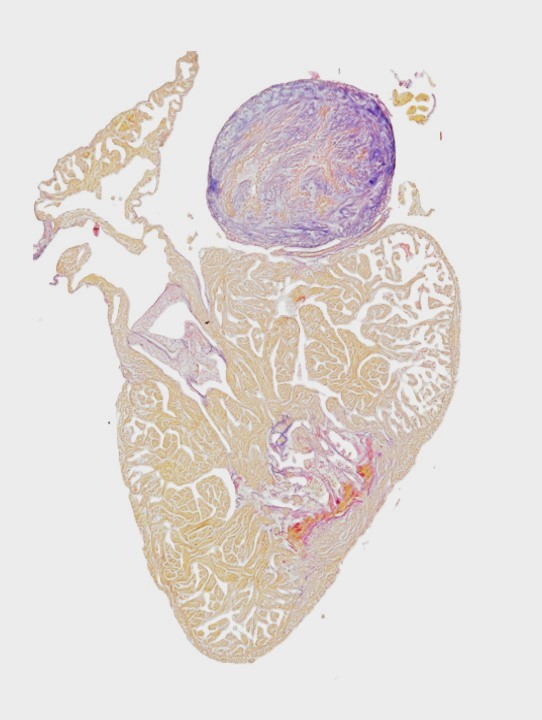
The role of Neuropilins in the modulation of macrophage phenotype during zebrafish heart regeneration
Neuropilins (NRP1, NRP2) regulate macrophage polarization (towards pro-repair (NRP1) or anti-inflammatory (NRP2) phenotype). This project investigates their role in zebrafish heart regeneration, focussing on the modulation of the initial inflammatory phase of the process.

Challenge
Thanks to advances in medical treatments for myocardial infarction (heart attack), survival rates have improved significantly. However, the human heart lacks the ability to regenerate effectively, leading to the formation of a permanent scar that weakens its ability to contract. Over time, this scarring contributes to heart failure, reducing patients' quality of life and increasing their risk of further complications and death.
Solution
In contrast, zebrafish possess a remarkable ability to regenerate organs, including the heart. Following a heart attack, they can fully repair damaged tissue, replacing scarred areas with healthy, functional tissue. Using a zebrafish model that mimics human heart attacks, we discovered that the proteins Neuropilin 1 (NRP1) and Neuropilin 2 (NRP2) are significantly elevated after injury. NRP1 plays a crucial role in guiding healthy cells and new blood vessels to the damaged area, promoting heart regeneration.
In this study, we aim to explore the roles of NRP1 and NRP2 during the early inflammatory phase of heart repair, as both receptors are essential for immune cell function. Specifically, we will investigate how neuropilins influence macrophages - immune cells that are key players in both scar resolution and tissue regeneration.
Impact
Since humans share the majority of their genes with zebrafish, our findings could provide valuable insights into potential therapeutic strategies for heart failure, a major global health challenge.

